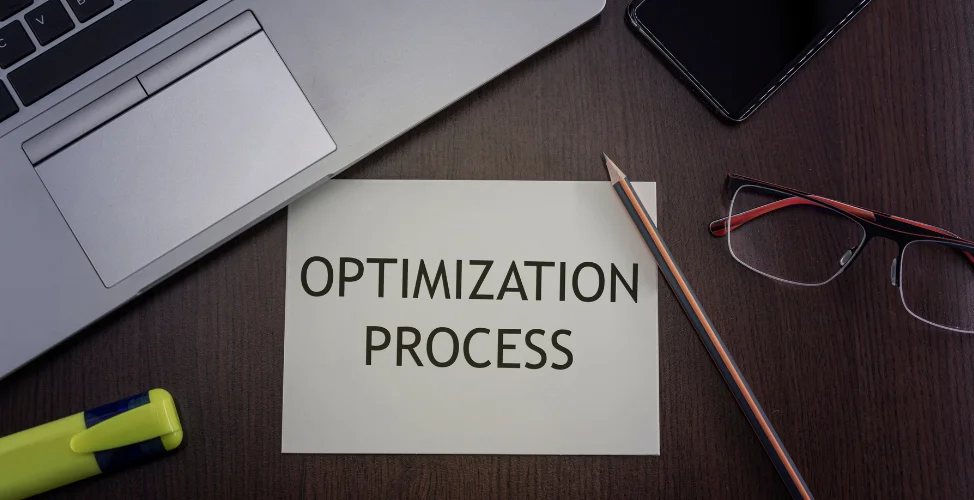August 03, 2021
Business Process Optimization for SMEs in Taiwan: Where to Start?
Taiwan’s small and medium enterprises (SMEs) are the lifeblood of the economy, yet many still struggle with outdated practices that slow growth. This is where business process optimization comes in. In this guide, SmartOSC breaks down how SMEs in Taiwan can start small, grow steadily, and adopt practical digital solutions without losing focus.

Highlights
- SMEs in Taiwan are driving growth but face limits in resources and digital readiness.
- Business process optimization helps improve efficiency, cut waste, and support digital transformation.
- AI, BPM tools, and government programs are already proving their value in Taiwan’s market.
Understanding the Role of SMEs in Taiwan’s Economy
SMEs make up 97% of all businesses in Taiwan and employ over 78% of the workforce. These numbers alone show how central they are to economic stability.
Their strength lies in agility, niche expertise, and the ability to innovate faster than larger competitors. Many SMEs thrive by serving specialized markets or tailoring services to local demands.
But challenges remain. Resource constraints limit investments in technology. Gaps in digital skills create bottlenecks. Succession planning is another hurdle, as many family-run businesses struggle to modernize leadership structures.
The Link Between Business Process Optimization and Digital Transformation
So, what does business process optimization mean for SMEs? Put simply, it’s about refining existing processes so operations run more smoothly and costs stay under control.
For SMEs in Taiwan, this approach connects directly with competitiveness. Cutting time wasted on manual tasks or outdated systems means more focus on customers and growth.
The market itself is shifting fast. Taiwan’s Business Process Management (BPM) sector is valued at USD 64.4 million in 2024, with projected CAGR of 9.71%. That growth reflects the rising demand for automation, analytics, and digital transformation strategies.
Identify Your Digital Maturity Stage Before Acting
Before diving into tools or strategies, SMEs need to know where they stand digitally. Not every business is ready for AI or advanced analytics right away. This makes business process optimization a staged journey rather than a one-time project.
Digitization
At this stage, businesses replace paper-heavy workflows with digital tools. Think electronic invoicing, e-forms, or basic cloud storage for documents.
For many SMEs, this is the first step away from inefficiency. It clears room for more structured growth later.
Digital Optimization
Here, systems begin talking to each other. Integration removes silos, connecting accounting with point-of-sale (POS) systems, or linking CRM platforms with feedback tools.
Automated reporting cuts hours of manual work. Cross-department visibility improves. SMEs in Taiwan’s retail sector, for example, see quick wins when ERP systems sync directly with POS data.
Full Digital Transformation
This stage redefines business models entirely. Decision-making shifts toward predictive analytics, AI, and omnichannel experiences.
O2O retail strategies, where offline stores and online platforms merge, are already a strong focus in Taiwan. Big players like convenience store chains are showing how predictive analytics guides product placement, while smaller SMEs follow with scaled-down versions of the same.
See more: Penetration Testing in Taiwan: Key Compliance Standards Every Company Must Know
Mapping, Analyzing, and Redesigning Your Processes
Process mapping sounds technical, but it’s simply documenting each step in a workflow. From decision points to handoffs, every stage gets written down.
Once mapped, SMEs can analyze workflows with methods like Lean Six Sigma or value stream mapping. These techniques play a big part in business process optimization, helping companies spot waste and decide what to refine first.
Before going live with changes, testing through simulations prevents costly missteps. For example, a manufacturer can simulate supply chain adjustments before altering vendor agreements. This approach avoids disruptions and builds confidence.
Strategic Use of BPM and Automation Tools
Automation is no longer reserved for global corporations. Taiwanese SMEs are adopting BPM tools that connect systems and automate repetitive work.
Rising trends include robotic process automation (RPA), AI-driven decision systems, and application development for tailored business tools.
Cloud-based solutions provide flexibility, but on-premises still works for industries with strict data regulations. Each SME needs to weigh cost, compliance, and scale.
Some standout cases highlight success:
- Bank of Taiwan integrated AI into client service, cutting response times and increasing satisfaction.
- Foxconn’s FoxBrain applies AI to manufacturing, identifying flaws before they spread across production lines.
These examples show how AI, RPA, and BPM aren’t just buzzwords. They’re working solutions SMEs can adopt on a smaller scale.
Leveraging Government Support and SME Ecosystem
The Taiwanese government recognizes the importance of modernization. Through SMEA, SMEs gain access to consulting, training, and funding support.
Programs like the APEC Digital Innovation workshop even focus on sustainability goals, linking digital growth with low-carbon transformation. This dual push helps SMEs compete while meeting global standards and ties directly into long-term business process optimization.
SMEs can also tap into industry clusters and B2B networks. Collaboration reduces costs, opens new markets, and encourages knowledge sharing. For example, manufacturing clusters in Taichung have been quick to adopt shared digital tools, cutting procurement delays.
Measuring Results and Building a Culture of Continuous Improvement
Tracking progress is as important as starting the journey. SMEs should set KPIs that reflect efficiency, customer satisfaction, and cost control.
Improvement doesn’t happen once. It’s a cycle. Regular reviews, feedback sessions, and adjustments build a culture where innovation sticks.
Employee engagement matters too. Teams that feel involved in decision-making are more likely to adopt new tools and improve processes. Cross-department workshops are a simple yet effective way to keep staff aligned.
Common Pitfalls and How to Avoid Them
Many SMEs stumble when adopting new systems. Recognizing the most common pitfalls early helps prevent wasted time and resources.
- Lack of integration: Running isolated tools without syncing them creates new bottlenecks instead of solving old ones.
- Employee resistance: Teams may resist change if communication and training are missing.
- Over-investing in technology: Buying the latest systems without aligning them to business needs often leads to wasted budgets.
SMEs should avoid chasing trends and instead focus on aligning tools with goals.
See more: How Digital Banking Platforms Are Transforming Financial Services in Taiwan
SmartOSC – Your Partner in Business Process Optimization
We at SmartOSC have worked with businesses across industries to refine processes and improve operation & optimization. Our approach combines global expertise with local understanding.
From AI and Data Analytics analytics to automation, we tailor solutions to SME realities in Taiwan. Our partnerships with platforms like Magento, Shopify Plus, and Salesforce ensure integration aligns with business growth.
Whether it’s omnichannel retail or predictive analytics in manufacturing, we bring both technology and strategy together.
FAQs: Business Process Optimization
What is the first step in business process optimization for SMEs?
Start by mapping out current workflows. This reveals gaps and shows where digital tools bring the most value.
How can AI improve business process optimization in Taiwan?
AI supports predictive planning, automates repetitive tasks, and improves customer engagement across industries.
Which government programs support SME process improvement?
SMEA initiatives provide consulting, training, and funding, while industry workshops encourage collaboration.
How long does it take to see results from BPM adoption?
Early results often show within months. Long-term gains in efficiency and cost savings build over one to two years.
What industries in Taiwan benefit most from BPM tools?
Manufacturing, finance, retail, and healthcare are leading adopters, but any SME can benefit with the right setup.
Conclusion
SMEs in Taiwan are facing both challenges and opportunities. The right use of business process optimization allows them to cut waste, improve customer focus, and secure long-term growth.
At SmartOSC, we’ve guided many businesses through these stages with solutions built for scale and practicality. To see how we can support your transformation, contact us today.
Related blogs
Learn something new today


